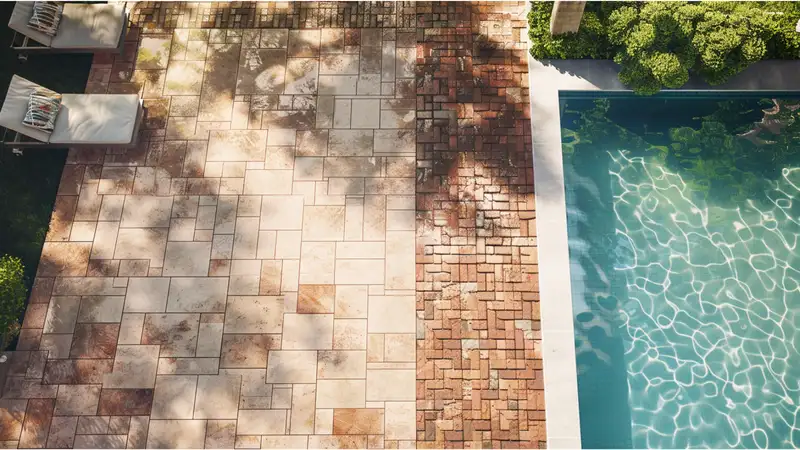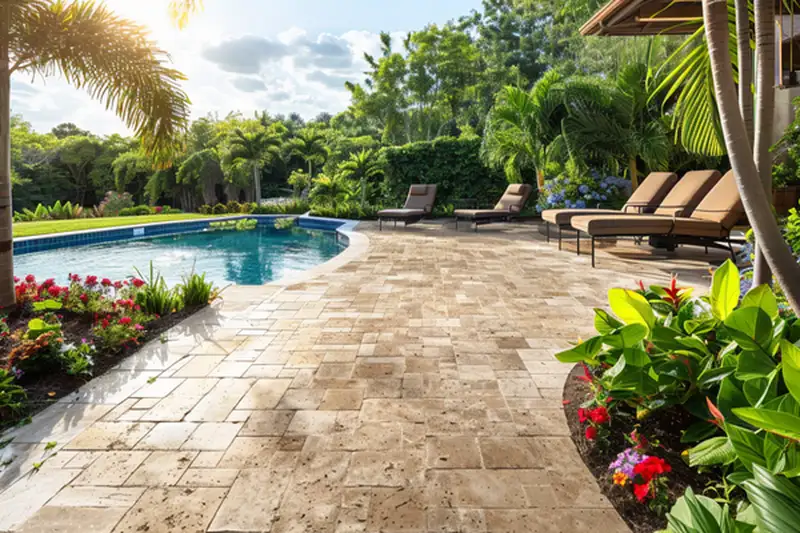Travertine vs Brick Pavers: Choosing the Ideal Outdoor Surface
Selecting the right paving material shapes your outdoor living experience. From pool decks and patios to garden paths and driveways, the decision between travertine pavers and brick pavers impacts aesthetics, comfort, durability, and long-term value. This guide explores both options to help you make the best choice for your property.

Understanding Travertine and Brick Pavers
Travertine pavers are natural limestone tiles, appreciated for their porous texture, natural beauty, and cool feel underfoot. Tumbled, chiseled, or honed finishes create a luxurious, resort-style ambiance while remaining functional.
Brick pavers are kiln-fired clay units, celebrated for color consistency, durability, and traditional appeal. Used for centuries in patios, walkways, and driveways, brick evokes timeless style and reliability.
Travertine vs Brick: Key Differences
| Feature | Travertine Pavers | Brick Pavers |
|---|---|---|
| Visual Appeal | Organic veining and natural hues; luxurious, upscale appearance. | Uniform colors; rustic, classic charm with historical character. |
| Heat Comfort | Stays cool under direct sun—ideal for poolside areas. | Can get hot in summer; may be uncomfortable for bare feet. |
| Slip Resistance | Tumbled or textured finishes provide excellent grip. | Moderate traction; depends on surface texture and joint sand. |
| Durability | Strong and resilient; sealing increases stain resistance. | Very durable; withstands heavy loads well. |
| Freeze-Thaw Performance | Performs well with proper drainage and breathable sealers. | Stable in cold climates; joint maintenance may be required. |
| Maintenance | Periodic sealing; easy to clean with mild detergent. | Low maintenance; occasional sand replenishment recommended. |
| Cost & Value | Higher upfront cost; adds luxury appeal and resale value. | Lower initial investment; long-lasting but less premium look. |
Ideal Applications

Pool Decks & Spas
Travertine provides a cool, non-slip surface perfect for areas around water features.
Patios & Courtyards
Travertine brings a sophisticated, upscale feel; brick offers cozy, traditional charm. Both are versatile depending on your design vision.
Walkways & Garden Paths
Brick suits classic landscapes with its consistent pattern, while travertine provides natural elegance for contemporary designs.
Driveways
Both options can work. Brick supports heavy loads with interlocking patterns; travertine adds premium curb appeal and luxury.
Maintenance Tips
Travertine: Apply a breathable sealer to guard against stains, oils, and pool chemicals. Reseal every 2–3 years in high-traffic areas.
Brick: Monitor joint sand and remove efflorescence as needed. Pressure washing helps maintain fresh appearance.
Cost Considerations
Travertine has a higher initial cost but enhances property aesthetics and resale. Brick is more economical and durable but offers a more traditional appearance. Your choice depends on budget, desired style, and long-term value.
FAQs
Are travertine pavers slippery when wet?
No. Tumbled travertine ensures safe footing, even around wet areas like pool decks.
Which lasts longer: travertine or brick?
Both can last decades with proper care. Travertine emphasizes luxury; brick focuses on rugged durability.
Which material is best for driveways?
Brick provides strong interlock patterns for heavy loads, while travertine boosts curb appeal. Choose based on design and function.
Do travertine pavers require sealing?
Yes. Sealing prevents stains and simplifies maintenance. Use a penetrating, non-glossy sealer for best results.

